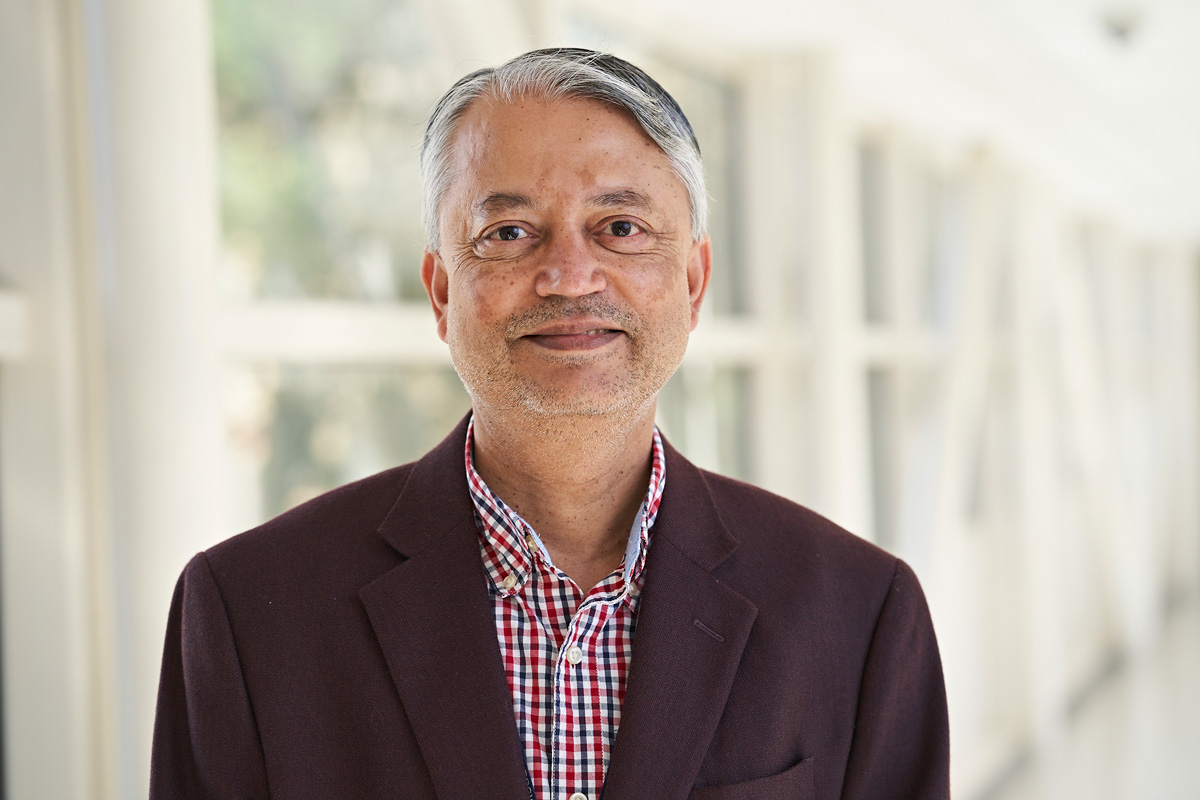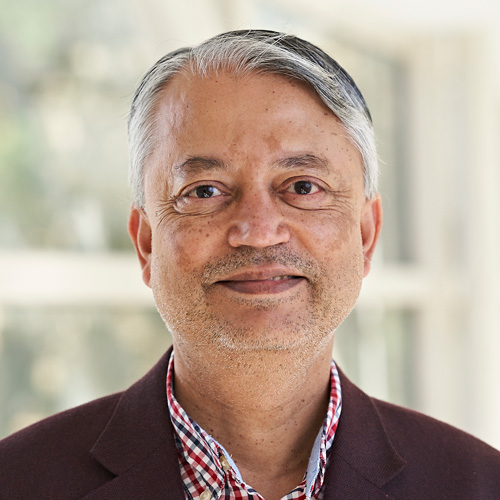Research Interests:
Anticancer effects of antinagiogenic methylselenocysteine (MSC) in combination therapy using different human cancer xenografts including colorectal, head & neck and lung cancer Isothiocyanate (ITC) and ITC containing natural substances such as Mustard, Broccoli, Wasabi and Horseradish in retarding bladder cancer growth, progression and invasion in vivo Anticancer efficacy of homeopathic remedies in vivoAbout Arup Bhattacharya
Biography:
Dr. Arup Bhattacharya joined the PhD program in Cellular and Molecular Biophysics in the Roswell Park Graduate Division, SUNY at Buffalo in 1999. After completing his PhD in 2005, he did his postdoctoral training in Translational Pharmacology and Physiology under Dr Youcef M. Rustum in the Department of Cancer Biology. His postdoctoral training was supported partly by a postdoctoral grant from American Institute for Cancer Research. Since 2009 he is an Affiliate member in the Department of Cancer Prevention and Control.
Positions
- Affiliate Member
- Department of Chemoprevention
State University of New York at Buffalo
- Associate Research Professor
- Department of Natural Sciences
- Roswell Park Graduate Division
Background
Education and Training:
- PhD - Molecular & Cellular Biophysics, State University of New York at Buffalo, Buffalo, NY
Professional Memberships:
- American Association for Cancer Research
- American Association of Physicists in Medicine
- International Society for Magnetic Resonance in Medicine
- Homeopathic Medical Council of Canada
- North American Society of Homeopaths
- National United Professional Association of Trained Homeopaths
Research
Research Overview:
The role of MSC as a therapeutic agent in augmenting chemotherapeutic efficacy in combination chemotherapy is being investigated in terms of a common underlying factors. The relevance of histomorphology and tumor cell differentiation on the therapeutic efficacy is being pursued for determining clinic relevance. This study is currently being supported by an NCI grant.
Bladder cancer is one of the most expensive cancers to treat due to repeated recurrence and in the clinic it leads to higher mortality when it invades the bladder wall. Using in vivo preclinical bladder cancer model, the antitumor activity of various ITCs and ITC containing natural substances is being pursued.
Homeopathy has remained in the fringe due to paucity of studies in basic science. There has recently been validated report of its possible efficacy in some cancers. Research is being pursued to check the feasibility in vivo of using some homeopathic remedies for its possible anticancer efficacy.
Three components of Dr. Arup’s research are:
- Anticancer effects of dietary supplement selenium especially focusing on the organoselenium compound methylselenocysteine for its unique properties including a low toxicity profile in vivo. The effect on HIF-1α, VEGF, iNOS, Cox-2 is being studied in order to understand the antiangiogenic efficacy of MSC in vivo.
- The anticancer role of isothiocyanate (ITCs) and ITC containing natural products in retarding bladder cancer growth, progression and invasion.
- Possible anticancer efficacy of some homeopathic remedies in vivo.
Publications
- Bhattacharya A, Tang L, Li Y, Geng F, Paonessa JD, Chen SC, Wong MK, Zhang Y. Inhibition of bladder cancer development by allyl isothiocyanate. Carcinogenesis. 2010 Feb;31(2):281-6. doi: 10.1093/carcin/bgp303. Epub 2009 Dec 2. PMID: 19955395; PMCID: PMC2812574.
- Rustum YM, Tóth K, Seshadri M, Sen A, Durrani FA, Stott E, Morrison CD, Cao S, Bhattacharya A. Architectural heterogeneity in tumors caused by differentiation alters intratumoral drug distribution and affects therapeutic synergy of antiangiogenic organoselenium compound. J Oncol. 2010;2010:396286. doi: 10.1155/2010/396286. Epub 2010 Apr 27. PMID: 20445750; PMCID: PMC2860580.
- Bhattacharya A. Towards a better understanding of health and disease. A Compendium of Essays on Alternative Therapy. InTech. 2012 Jan;111-122. doi: 10.5772/39242.
- Chintala S, Tóth K, Yin MB, Bhattacharya A, Smith SB, Ola MS, Cao S, Durrani FA, Zinia TR, Dean R, Slocum HK, Rustum YM. Downregulation of cystine transporter xc by irinotecan in human head and neck cancer FaDu xenografts. Chemotherapy. 2010;56(3):223-33. doi: 10.1159/000316334. Epub 2010 Jun 11. PMID: 20551639; PMCID: PMC2914432.
- Bhattacharya A, Li Y, Wade KL, Paonessa JD, Fahey JW, Zhang Y. Allyl isothiocyanate-rich mustard seed powder inhibits bladder cancer growth and muscle invasion. Carcinogenesis. 2010 Dec;31(12):2105-10. doi: 10.1093/carcin/bgq202. Epub 2010 Oct 1. PMID: 20889681; PMCID: PMC3105588.
- Bhattacharya A, Tóth K, Sen A, Seshadri M, Cao S, Durrani FA, Faber E, Repasky EA, Rustum YM. Inhibition of colon cancer growth by methylselenocysteine-induced angiogenic chemomodulation is influenced by histologic characteristics of the tumor. Clin Colorectal Cancer. 2009 Jul;8(3):155-62. doi: 10.3816/CCC.2009.n.025. PMID: 19632930; PMCID: PMC2823082.
- Bhattacharya A, Turowski SG, San Martin ID, Rajput A, Rustum YM, Hoffman RM, Seshadri M. Magnetic resonance and fluorescence-protein imaging of the anti-angiogenic and anti-tumor efficacy of selenium in an orthotopic model of human colon cancer. Anticancer Res. 2011 Feb;31(2):387-93. PMID: 21378316; PMCID: PMC3129004.
- Bhattacharya A. Methylselenocysteine: a promising antiangiogenic agent for overcoming drug delivery barriers in solid malignancies for therapeutic synergy with anticancer drugs. Expert Opin Drug Deliv. 2011 Jun;8(6):749-63. doi: 10.1517/17425247.2011.571672. Epub 2011 Apr 7. PMID: 21473705; PMCID: PMC3111097.
- Bhattacharya A, Seshadri M, Oven SD, Tóth K, Vaughan MM, Rustum YM. Tumor vascular maturation and improved drug delivery induced by methylselenocysteine leads to therapeutic synergy with anticancer drugs. Clin Cancer Res. 2008 Jun 15;14(12):3926-32. doi: 10.1158/1078-0432.CCR-08-0212. PMID: 18559614; PMCID: PMC2504718.
- Bhattacharya A, Tóth K, Durrani FA, Cao S, Slocum HK, Chintala S, Rustum YM. Hypoxia-specific drug tirapazamine does not abrogate hypoxic tumor cells in combination therapy with irinotecan and methylselenocysteine in well-differentiated human head and neck squamous cell carcinoma a253 xenografts. Neoplasia. 2008 Aug;10(8):857-65. doi: 10.1593/neo.08424. PMID: 18670644; PMCID: PMC2481573.
- Azrak RG, Cao S, Durrani FA, Toth K, Bhattacharya A, Rustum YM. Augmented therapeutic efficacy of irinotecan is associated with enhanced drug accumulation. Cancer Lett. 2011 Dec 8;311(2):219-29. doi: 10.1016/j.canlet.2011.07.023. Epub 2011 Aug 6. PMID: 21872389; PMCID: PMC3183362.
- Bhattacharya A, Tóth K, Cao SS, Azrak RG, Durrani FA, Rustum YM, Pendyala L. Se-(methyl)selenocysteine causes tumor vessel maturation leading to synergistic antitumor effect in human xenografts. Journal of nutrition 2007;137(1 Suppl.):278S
- Cao S, Durrani FA, Bhattacharya A, Yu Y, Rustum YM. Enhanced irinotecan toxicity in UDPGT deficient GUNN rats: Role of UDPGT1A in irinotecan detoxification. Proceedings of the American Association for Cancer Research Annual Meeting. 2008 May;68(9):4784.
- Seshadri M, Bhattacharya A, Tóth K, Rustum YM. Contrast-enhanced MR1 of the vascular response of human tumor xenografts to the chemopreventive agent selenium in vivo: Implications for combination therapy. Proceedings of the American Association for Cancer Research Annual Meeting. 2007;48:119
- Bhattacharya A, Li Y, Geng F, Munday R, Zhang Y. The principal urinary metabolite of allyl isothiocyanate, N-acetyl-S-(N-allylthiocarbamoyl)cysteine, inhibits the growth and muscle invasion of bladder cancer. Carcinogenesis. 2012 Feb;33(2):394-8. doi: 10.1093/carcin/bgr283. Epub 2011 Nov 30. PMID: 22131350; PMCID: PMC3271268.
- Bhattacharya A, Turowski SG, San Martin ID, Rajput A, Rustum YM, Hoffman RM, Seshadri M. Combined magnetic resonance and fluorescence-protein imaging to simultaneously assess the anti-tumor and anti-angiogenesis efficacy of selenium. Cancer Research. 2011 Apr;71(8 Supplement):4284-4284. doi: 10.1158/1538-7445.AM2011-4284.

